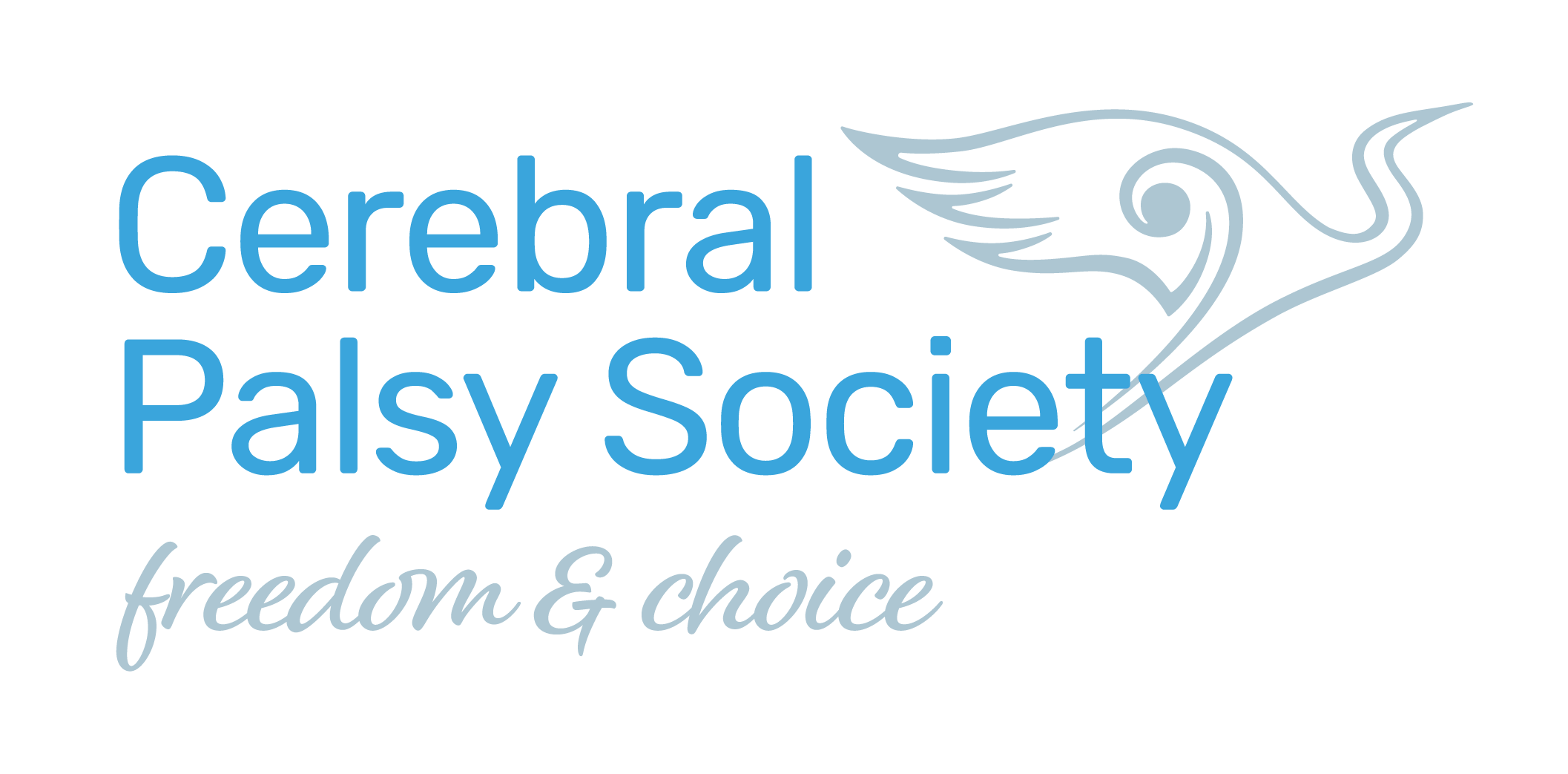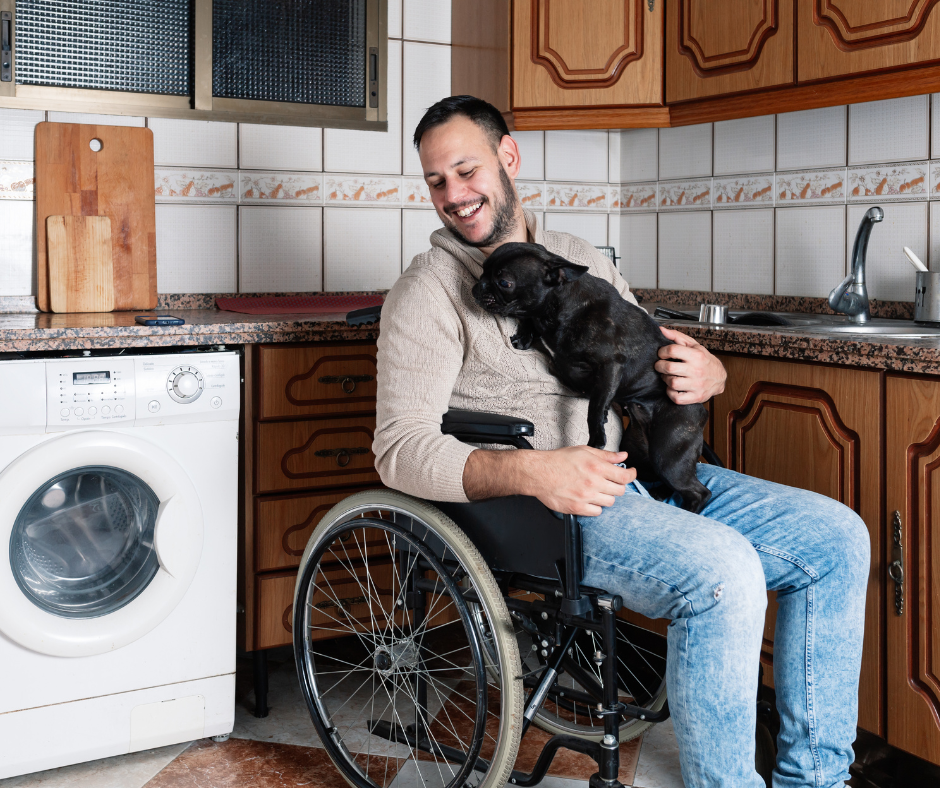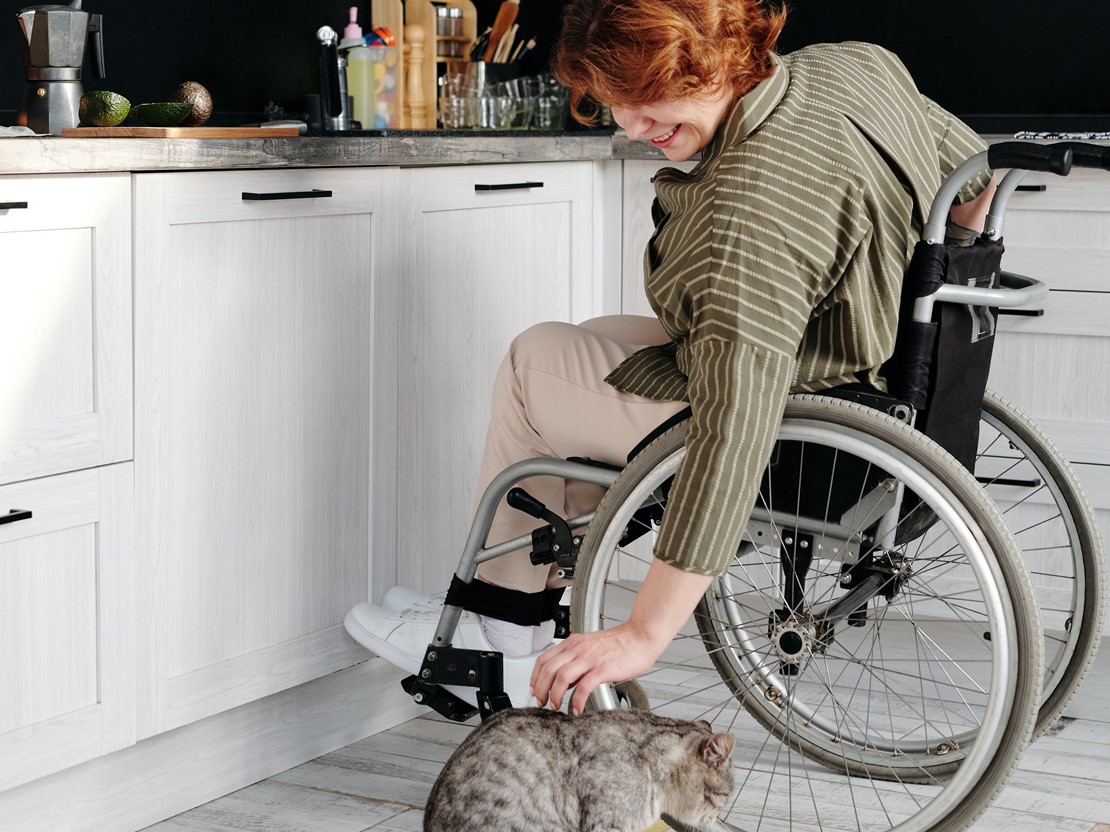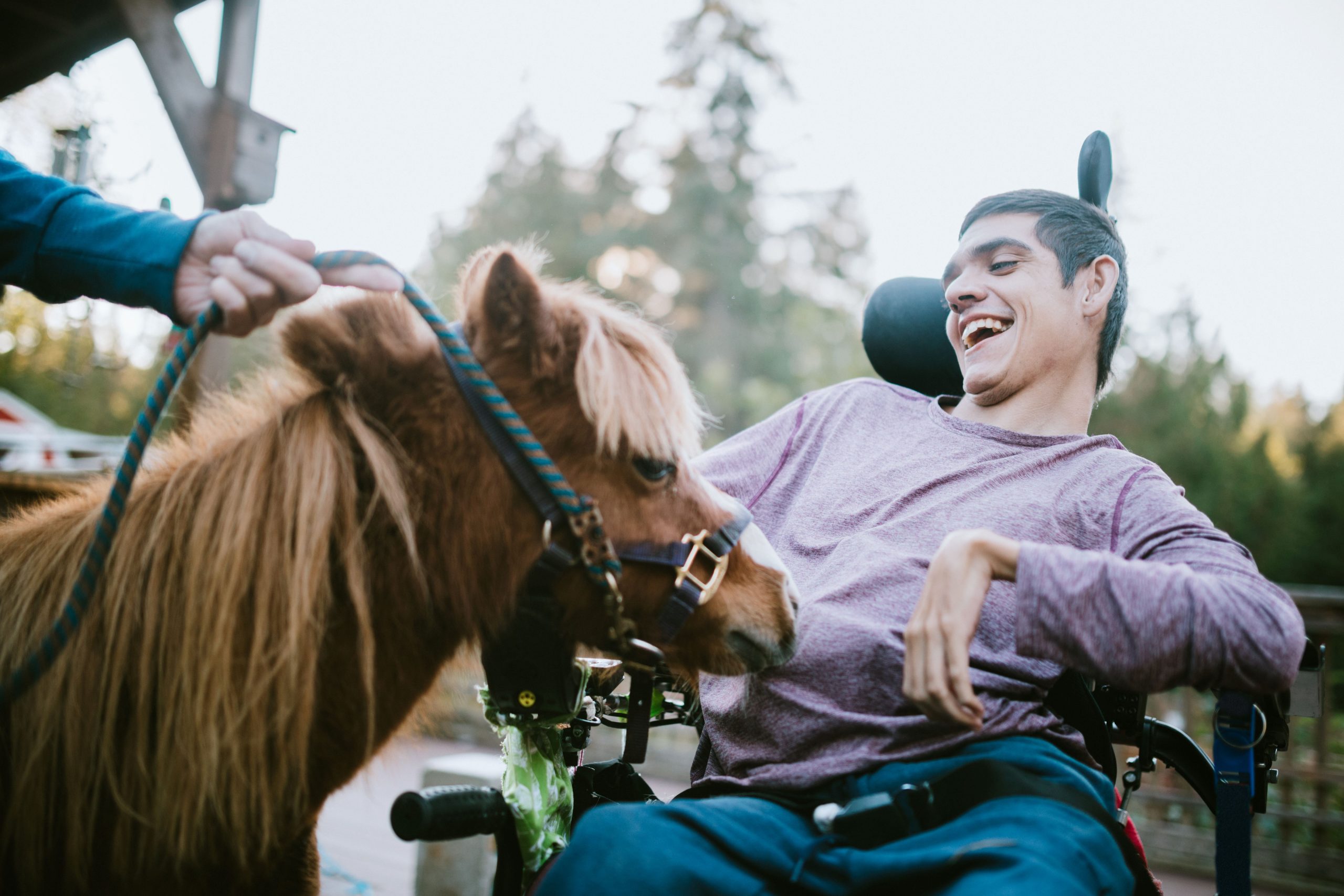Research
Disability and pets
13 Jun 2024
Having a pet or animal companion can provide a great sense of connection, fun and family.
By Amy Hogan
Aotearoa New Zealand has a reputation for being a country of animal lovers. Studies suggest that we have some of the highest rates of companion animals in the world.
While many think of cats, dogs, and rabbits, our connections with pets can take many forms.
Over the years, Cerebral Palsy Society members have shared with us about the animal members of their family and what they mean to them.
This article talks generally about living with disability and having a pet. It includes some practical elements when it comes to considering a new pet or fostering existing connections.
Selecting a new pet/companion
- People living with Cerebral Palsy (CP) – Hōkai Nukurangi can be particularly susceptible to sudden noises or sounds, so the barking of a dog or a cat fight may be difficult or distressing for them.
- The person living with the disability may interact with the animal differently than the people around them. For example, it may be impractical for them to do the grooming or cleaning (although there are adaptations that can be made to brushes or feeding setups to make this easier).
- There are ways to foster connections between individuals and animals even if the person with CP isn’t doing the practical tasks. For example, walking the dog alongside a wheelchair, or having a cat bed that is close to a regular hangout for the family.
- A smaller animal could be worth considering depending on the type of disability, e.g. a cat could sit on someone’s lap.
- It’s worth considering how you move, as well as how the animal For example, a cat could get underfoot for someone using a walker or crutches to get around.
- People living with CP can be susceptible to allergies and may also find it difficult to manage symptoms such as sneezing or a constantly runny nose. Before selecting a pet, consider both allergies and general irritations, e.g. will fur irritate the skin or get caught in wheels?
- When you are building connections with new caregivers, members have found it useful to mention that animals are or will be present and part of the household, and, where relevant, that working with animals and doing some of the physical tasks of pet ownership may be built into their job description.
- A few members have talked about the value of having a pet that they can simply watch, like a fish tank which can be particularly soothing while recovering from surgery or feeling less mobile. Feeding can also be done with limited hand function.
- Some members and their families find it impractical to own a pet themselves due to environment or lifestyle factors. But they still find benefits in setting up time to spend with animals in their wider family or visiting zoos or sanctuaries for the same effect.
Supporting the person and the animal
Once a pet has been selected, it is essential to establish a supportive environment that promotes the well-being of both the individual and the animal. Here are some practical tips around disability and pet care to consider:
- Have a short-term plan for pet siting, if you or the person you look after needs an extra level of care, such as a stay in hospital.
- There are adapted techniques for feeding animals, gripping leads or playing with them. Look into leads with different grips and alternative options for feeding stations.
- If you do have pets, it can be useful to mention them to occupational therapists, and physiotherapists. Pets can be included in therapy techniques, e,g, patting a dog or cat with the weaker side or doing activities around the fish tank.
Having a pet or animal companion can provide a great sense of connection, fun and family. There are many different ways to show affection and connect with animals even if you can’t take the lead or play with them.
If you would like to read some of the studies that this article is based on or you have any questions, please feel free to reach out to Amy via email.
* Amy Hogan is the Cerebral Palsy Society’s Researcher and Member Support Advisor.
She is a long-time animal lover who never left the animal and pet sections of the library (as a child or an adult). Her Mobility Dog Mary and turtle Christopher Hitchens are the lights in her life.





